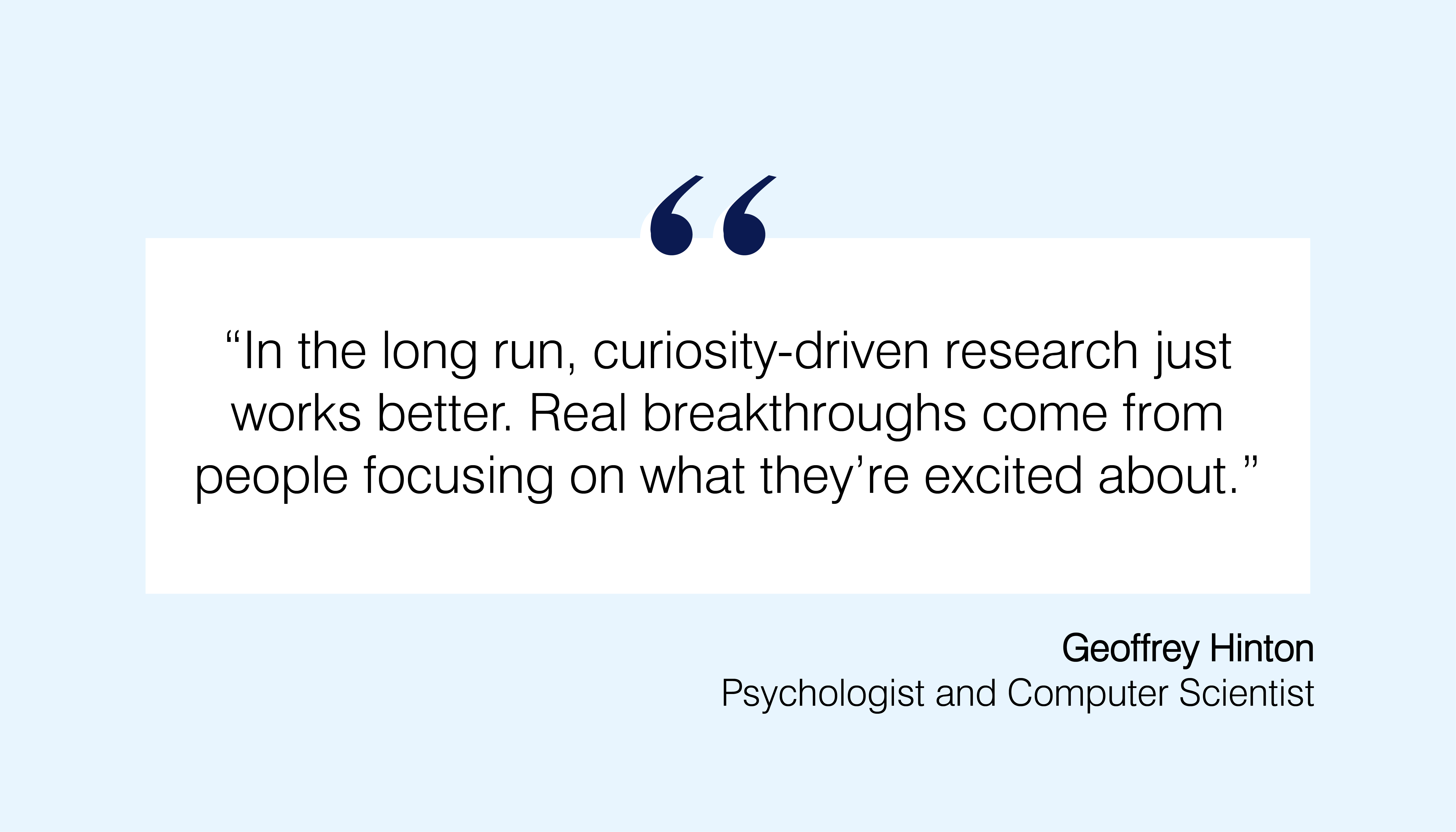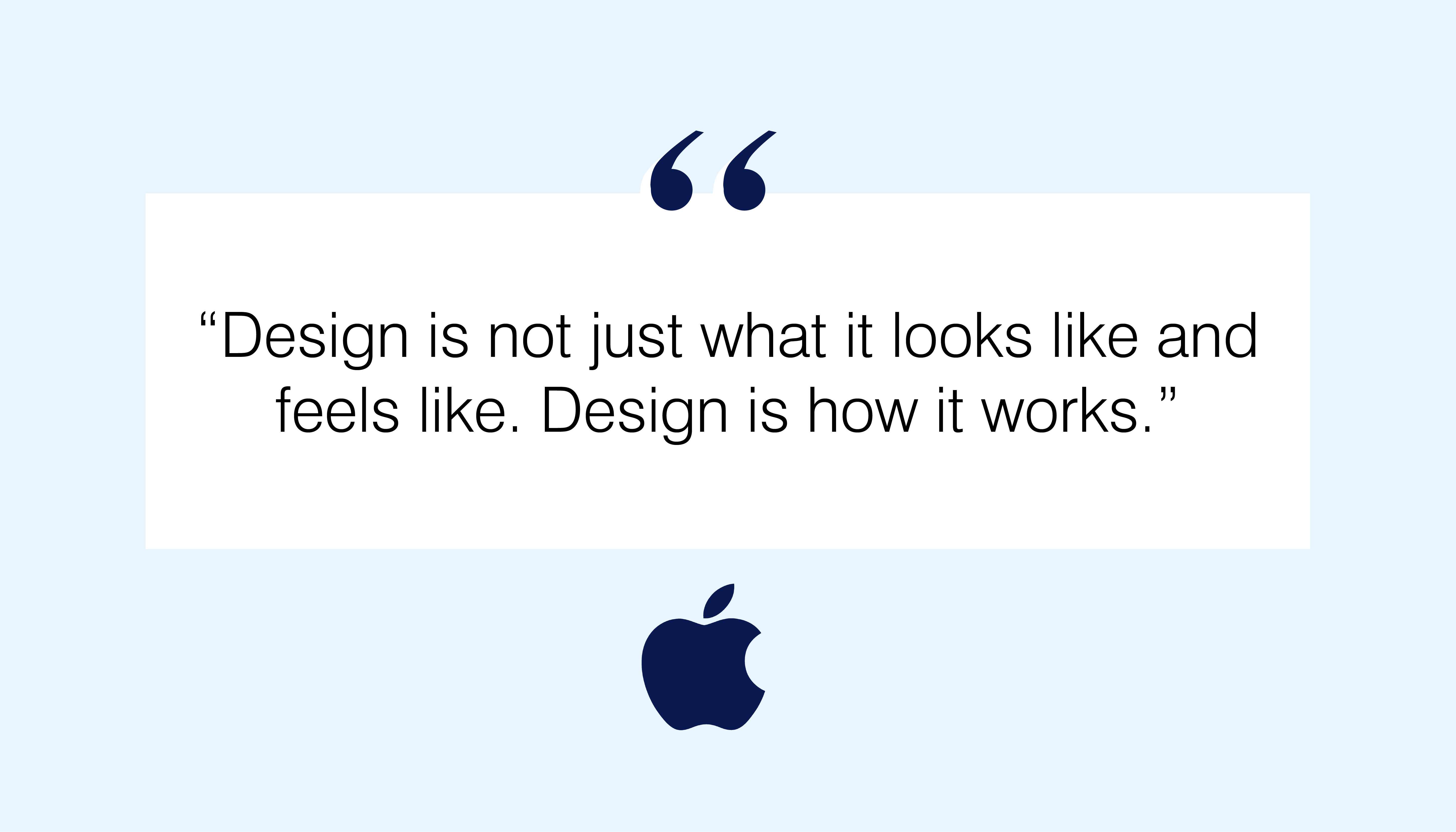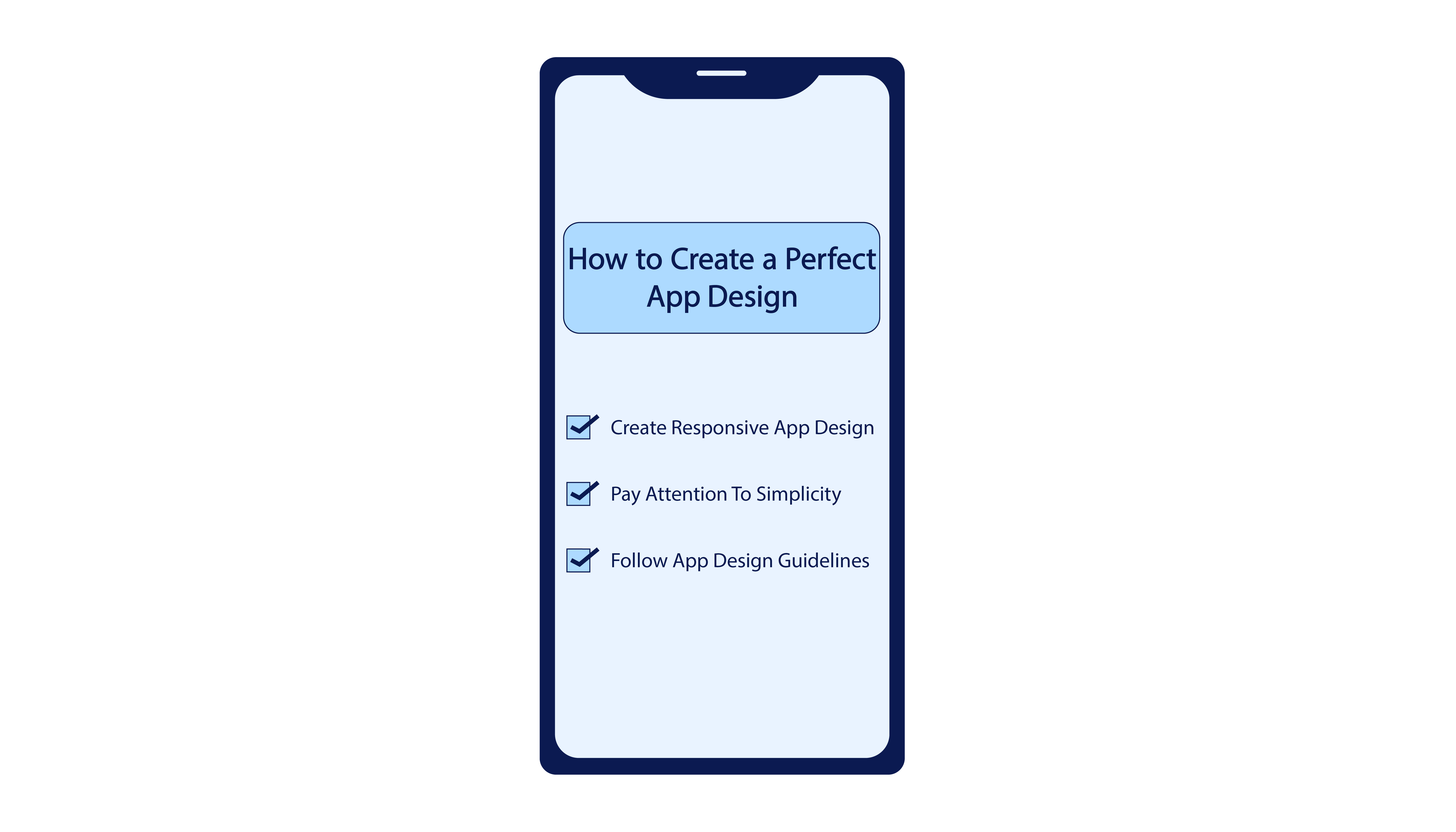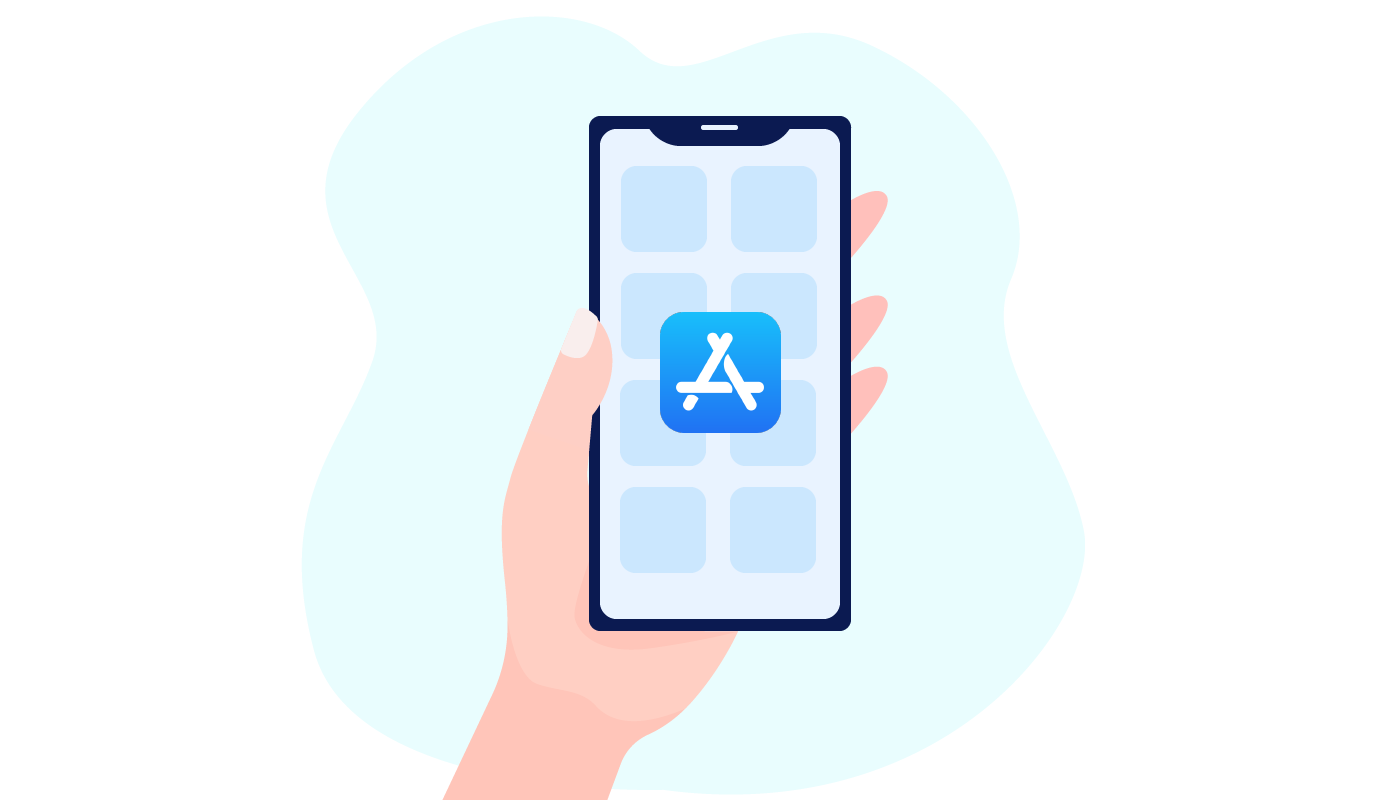The mobile app market is insanely growing. In the 3d quarter of 2020, users spent $28 billion on mobile apps, whilst in the same period of 2019, the expenditures were estimated at $23 billion.
So if you want to jump on the bandwagon of this prosperous market, you definitely need to design a user-friendly app. It means that your product should have a unique visual appeal, engage, and interact with your target audience.
To find out more about the main UX/UI design stages and tips on how to do it right, read our article!
4 Key Stages of App Design Process
UX/UI design is a complex process. To learn about it, you should stick to the following core 4 stages:
1. Do Market Research
Among 2.7 and 1.82 million apps available on the Google Play and App Store, only 1% of them succeed in the global market. Thus, if you don’t want your application to be a complete flop, conducting market research is a must.
By doing so, you’ll figure out what user interfaces to design and how your app should stand out on the market.

The core steps of market research include:
- Investigating the target audience is the process of discovering whether your app design will meet the needs of your users. You’ll define socio-demographic characteristics (location, age, gender, occupation, etc.) and detect customers’ purchasing behaviors (what factors can influence a user’s decision to download the app like price, beautiful design, etc.).
- Interviewing potential users is a qualitative approach to figuring out what will prompt your target audience to use your app and how it may solve their pain points. Let’s imagine that you plan to build an app for self-driving cars, and you need to discover what factors can motivate your target audience to use it. Thus, you organize a field study for your potential users and ask them how they’re going to interact with your product.
- Doing a competitor’s analysis is one of the most important steps in market research. During this process, you’ll scout out what tactics your app competitors implement to attract, engage, and retain their users. As a result, you can determine your app’s unique value proposition to stand out from your market competitors.
2. Create an App Wireframe
Once you’ve completed the research stage, you should sketch a wireframe – an easy layout of the app’s functionality that points out how a user will interact with the product. Before you start, you need to brainstorm ideas with the key stakeholders in your organization like product managers, UX/UI designers, and others.
After that, you should create a user flow – a set of actions that a user takes to reach a specific goal. For instance, if you want to design a food delivery app, the key objective for your target audience is to buy a meal from a supermarket or a restaurant. By designing a user flow, you’ll see how users may navigate through your app to place an order.
When you’ve finished this part, you can start sketching wireframes. There are 2 tactics on how you can approach it:
- The low-fidelity digital wireframe is a general representation of the core user flows in app design. To create it, you can use free templates like Placeit or design instruments as Adobe XD.
- The high-fidelity digital wireframe is a more advanced version of the user flow. It includes the number of screens, the main user flows, colors, components, character styles of user interfaces, etc.
3. Initiate UX/UI Design Stage
Once you’ve sketched a wireframe, you get down to the app design. It includes 2 core stages like:
User Experience (UX) Design
The main goal of this phase is to develop a user-friendly app. This part of design focuses primarily on user experience and how to make it better. Steve Jobs, a founder of Apple, once told:

And it’s hard to disagree with this statement. Some studies prove that good user experience can increase conversion rates by nearly 400 percent. So if you’d like to get the same result for your app, you should definitely follow these steps in UX design:
- Determine how your app can solve users’ problems.
- Organize brainstorming sessions with product and design teams to create user stories, personas, and cases.
- Analyze the needs, goals, behaviors, and pain points of your targeted users.
User Interface (UI) Design
It’s the process of making a good looking app based on the way it feels and interacts with users. Interaction Design Foundation divides user interfaces into graphical (GUI), voice-controlled (VUI), and gesture-based formats.
To create the best app UIs, it’s important to keep in mind such things:
- Pay attention to the way your users will interact with your app.
- Design intuitive and responsive UIs that predict user needs inside the app.
- Take notice of color, contrast, and brightness when creating user interfaces. To learn more about this aspect, read the article about top UI trends.
4. Test App Design
Testing is one of the main steps that shouldn’t be omitted if you want to make a user-friendly app. By doing this, you can figure out whether your visual design (color, layout, fonts, and imagery) will work for your target audience. Also, such tests help to spot usability issues and develop solutions to them.
And you can do that with these 3 methods:
- First-click tests are tactics that aim to measure app usability and find out whether a particular task is easy to complete.
- Preference tests help to determine what design is better for a user between two options.
- User surveys intend to collect data from your users about your app design.
Top Tips On How To Design a Perfect User-Friendly App
The user-centered approach is an iterative design process focused on user needs during these 4 phases:
- Understanding the context.
- Investigating user requirements.
- Finding design solutions.
- Assessing created design.
So, if you’ve ever wondered how to make a useful app with the help of the aforementioned framework, read the following handy suggestions:
Create Responsive App Design
Responsive app design means compatibility of your product with different mobile platforms and screen sizes. To achieve this, you should create several design versions and adjust them to different browsers (Chrome, Safari, Opera, etc.) and screen resolutions (360 x 640 – a small mobile screen or 720 x1280 – a large mobile screen).
Pay Attention To Simplicity
Simplicity relates to intuitive and easy-to-understand features for your app users. There are several approaches to evaluate their effectiveness like the KISS (Keep It Simple Stupid) principle, 10 usability heuristics of Jacob Nielsen, and much more.
Whatever of these methods you choose, make sure your app is convenient and easy-to-use for the target audience.
So if you decide to apply 10 usability heuristic principles, you can evaluate whether your UX/UI design is compatible with users’ needs. When implementing the KISS principle, bear in mind that your app design should be simple and straightforward.
Follow App Design Guidelines
While you’re designing an app for iOS or Android platforms, keep in mind that each of them has their own design guidelines.
If you plan to submit your product on the App Store, your app design should meet these requirements:
- Fonts, graphics, colors, and user interfaces must clearly deliver content elements.
- Follow the principle of direct manipulation – when icons, arrows, and other UI elements guide a user to take an action in the app.
- Implement the 3d heuristic principle about user control and freedom – when users can get rid of unwanted activities.
- User interface and user experience parts are well-integrated in the app.
- App UIs should inform a user about taken actions.
- Create seamless transitions and navigations among different app screens.
App design’s criteria for GooglePlay are:
- Buttons and user actions should be compatible. For instance, a ‘Home’ button should always direct to the ‘Home’ page.
- The app implements notifications to indicate changes in the ongoing context. One of the examples of this criterion is when a user has changed an older app version for a new one, and he or she is informed about that.
- The app doesn’t have misleading UIs that force a user to take the unknown action like a booking apartment app prompts to rent a yacht instead of a house.
- UIs are rendered correctly, and they don’t display unnecessary transitions. For example, in a travel app, you see screens with cooking recipes from your home country.

Create Beautiful App Design With LITSLINK!
Designing high-quality and user-friendly apps is a daunting task. To attain this goal, you should conduct market research, create a wireframe, do UX/UI design, and test its effectiveness.
In our article, you’ve discovered all the aforementioned steps and tips on how to do them right.
Whether you want to create great UX/UI design, contact LITSLINK for top-notch software product design services, and book high-end consultation from our experts!




